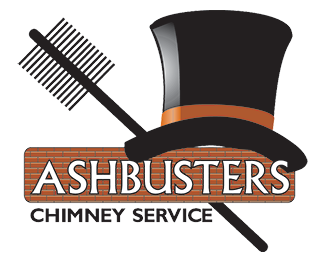Dryer Vent Cleaning Should Be Top On Your List
It may surprise you why you need to place cleaning your dryer vent very high on your annual to-do list; dryer vent fires are more of a fire risk than chimney fires and most families have dryers. When the Consumer Product Safety Commission (CPSC) issues an alert, we should all pay attention. They issued one several years ago because there are approximately 15,500 fires, 10 deaths, and 310 injuries from dryer exhaust fires annually.
This is just one reason we believe having our dryer vent technicians certified by CSIA (Chimney Safety Institute of America) is important. We want our customers to rest assured that every technician that enters their home knows what they are doing from start to finish. Because many of the same tools used to sweep a chimney are also used to sweep or clean a dryer vent, it makes sense to cross-train our techs. This way, when people have both dryers and chimneys, the same sweeps can service both at the same time if desired. You can get two things off your list with one service call!
Why Clean Your Dryer Vents:
- Clean Dryer Vents WILL NOT ignite and start a fire
- Clean Dryer Vents WILL extend the life of your dryer
- Clean Dryer Vents WILL save you $$ in energy savings
Why the above is true
Lint is one of the most flammable materials in your home. Even the Boy Scouts of America recommend lint as a great fire starter. That’s great when you need to start a campfire but not to start a fire in your home! Once that lint backs up in your dryer vent, not only is it a fire hazard but it also limits air flow from the dryer, which causes it to work harder than it should. This shows up when you have to restart the dryer another cycle or two in order to get the clothes dry. These extra cycles are pulling energy (gas or electricity) and that is costing you more dollars! It really is just that simple.
Add to this the number of homes where dryers are installed on top levels as well as condos and apartment buildings with dryer hook ups on multiple floors and you start to see that this is a potential problem. These vent runs are longer with multiple elbows and turns and we’ve even seen vents that go up that have a very hard time working against gravity. We believe these instances are just oversights yet they are still potentially dangerous if not discovered and rerun. It’s no longer easy to vent the dryer exhaust in many of these modern buildings.
Extra Danger for Gas Dryers
Gas dryers also vent carbon monoxide (CO2), which is a poisonous gas that kills people every year. If the venting is to the outside of the home it can be naturally dispersed into the atmosphere. However, we have seen vents leading to attics, basements and into walls where the lint, CO2 and other debris collects. We’ll let you decide if you would want to live in a house where this was done.
Another thing we often see is the old plastic accordion-style connectors, which are no longer up to current codes. We replace them with a rigid metal vent tube or a UL Listed metal flex-connector cut to the shortest length possible that is up to the current code standards.
How We Clean Dryer Vents:
- The dryer will be moved away from the wall. (We may do a couple more diagnostics at this point.)
- A vacuum that is blowing out will be attached to the vent.
- From the outside a set-up to capture lint will be used. The rods are quite flexible and will navigate several 90 degree turns. The drill action gives the rotation and spin to really scrub.
- The technician will move the drill/rod/brush in and out repeatedly while the vacuum is blowing from the inside. All in all this has proven to be an extremely effective method for dryer duct cleaning, also known as dryer exhaust cleaning.
Dryer vent cleaning service prices will vary depending on accessibility, length of the dryer vent and possible blockages or breakage in the connector.
Chimney sweeping and cleaning should not be put off and neither should these additional chimney and dryer vent safety services.
